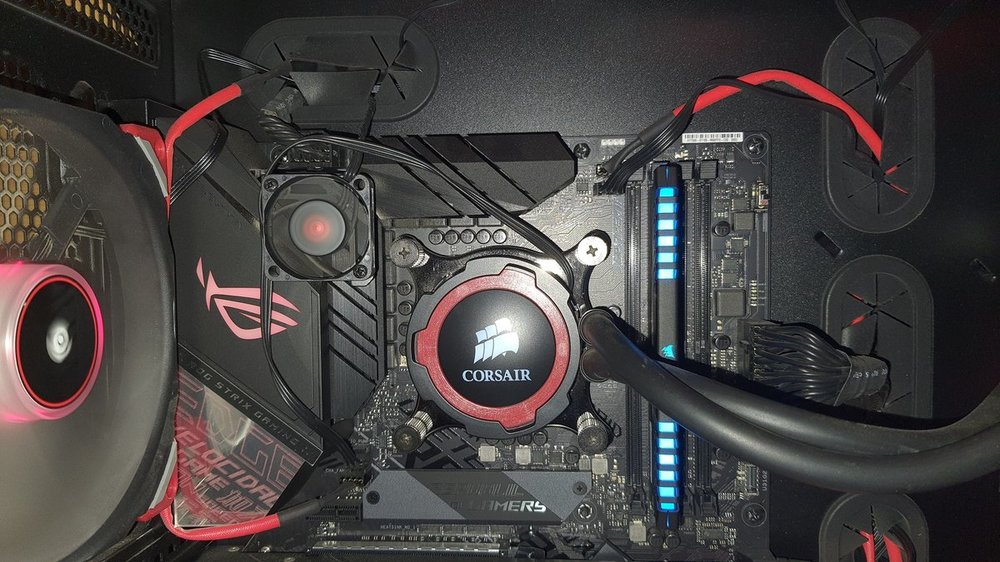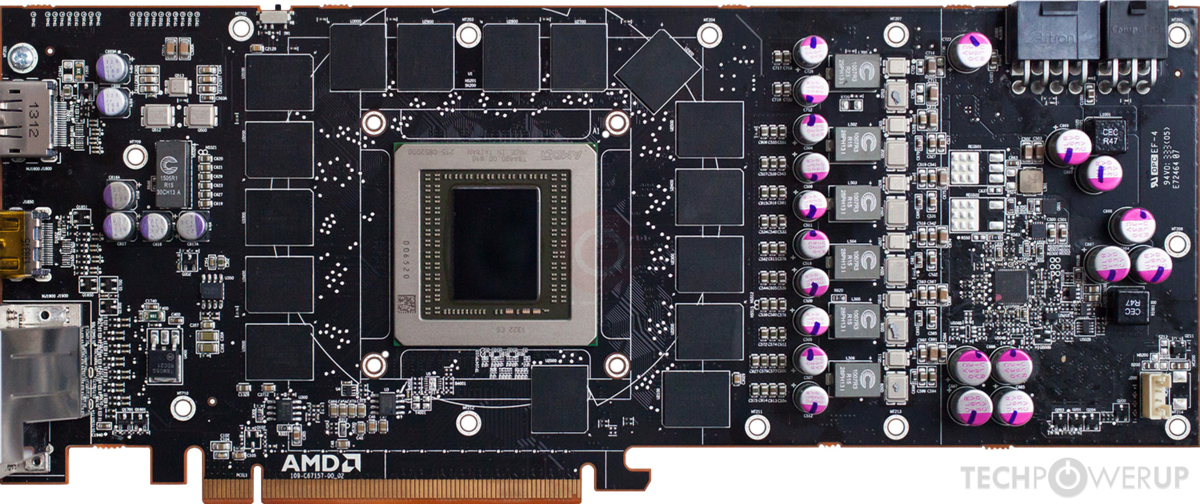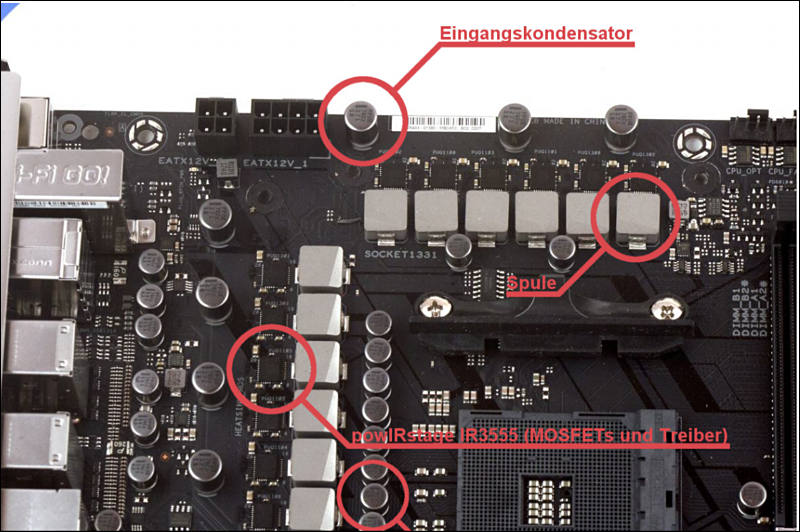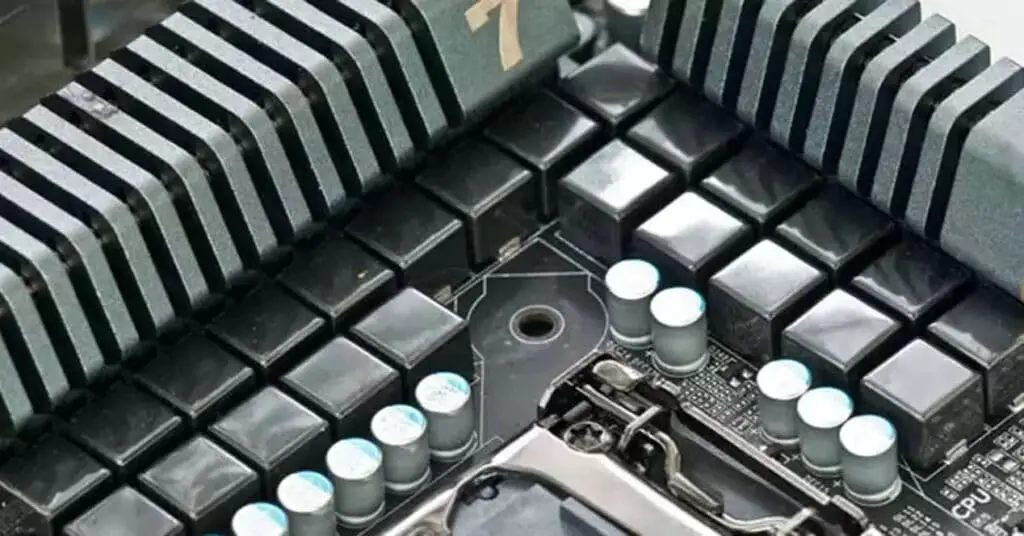What is Vendor Risk & Vendor Risk Management (VRM)?
Written by Jake Olcott
January 09, 2023
Vendor Risk Management Definition
Vendor risk management (VRM) is the practice of evaluating business partners, suppliers, or third-party vendors both before a business relationship is established and during the duration of your business contract. This is an important concept and practice to put in place during the evaluation of your vendors and the procurement process.
What to Include in Your Vendor Risk Management Strategy
Your VRM strategy should include a contract that outlines the relationship that will exist between your business and the vendor. Because of the increasingly interconnected nature of global supply chains and flow of data, there should also be clear guidelines around who has access and control of sensitive information.
A key, yet often overlooked, feature of vendor risk management is understanding your vendor’s cybersecurity program. This allows you to understand how well they’re going to be able to secure your data, both from a physical and cyber perspective.
The vendor must also agree to and comply with any regulations that pertain to your industry. Finally, to ensure that all these contract requirements are met, vendor performance must be monitored on a continuous basis.
Need a place to start? Get a cyber security risk assessment template
Vendor Risk Management: Addressing Vendor Risks
Below is an overview of the many vendor risks that third parties can bring to your enterprise:
Third-Party Legal Risk
There are many legal risks associated with sharing sensitive information with third parties. For instance, if your vendor is breached and you lose your customers’ personally identifiable information (PII) like social security numbers or health care records, the law clearly states that you are responsible — not your vendor. Or, if you fail to spell out security expectations in your vendor contract, you may have no legal recourse whatsoever if your vendor compromises your data.
Third-Party Reputational Risk
So much of third-party vendor risk management is based on reputation. Be sure to ask a lot of questions at the beginning of the vendor procurement process so that you can weed out the businesses you’d rather not work with. In addition, you should also monitor news feeds during the procurement process. After all, you would want to know if a business associate has been hit with a lawsuit during the time you were engaged with them and how that could affect the performance of their contract with you. And don’t forget about the reputational harm that could affect your company if your customers’ sensitive information is stolen due to an insecure vendor.
Third-Party Financial Risk
If a vendor has a poor financial record or past performance, you’ll want to know that information before engaging in a business relationship. That’s why a lot of companies do credit monitoring for their vendors. You’ll also likely want to ask other organizations who have previously done business with the third-party in question for references. This way, you’ll be able to clearly evaluate the vendor’s project plan and all the different things they’re planning to do before entering into a contractual relationship.
This way, you’ll be able to clearly evaluate the vendor’s project plan and all the different things they’re planning to do before entering into a contractual relationship.
Third-Party Cyber Risk
Of the various risks a vendor poses, there are some things you need periodic updates on, which are relevant only at certain points of a business relationship. If you’ve established a vendor’s credit worthiness at the beginning of the process, for example, you’ll likely feel quite comfortable about their financial standing during the rest of the process. This is a good example of how some elements of vendor risk management do not require continuous security monitoring.
Cyber risk, however, is not quite as simple.
Cyber risk is unique in that things can happen on a moment’s notice which could catastrophically damage your organization. You simply cannot rely on periodic or infrequent snapshots, cyber security audits, and assessments of your vendor’s health to understand vendor cyber risk. The thing that makes cybersecurity “special” is that it can pose financial, reputational, and legal risks.
The thing that makes cybersecurity “special” is that it can pose financial, reputational, and legal risks.
It’s important to understand that cyber risk management doesn’t end when your vendor signs a contract. Managing third-party cyber risk requires persistent vendor monitoring and awareness, using tools like security ratings, of how that third-party’s security program is performing. You have to know at all times whether they are accessing your network in an unauthorized manner, or if your most important data could be jeopardized by their actions. Any slip-up or incident may have a catastrophic impact on your business (and lead to some pretty embarrassing headlines).
Vendor Risk Assessment: Consider This
Some losses from “traditional risks” can be easily and quickly recuperated. If a food and beverage vendor doesn’t show up one day to cater a meeting, you’re only dealing with a limited amount of loss. Or, if a vendor doesn’t complete a project to your expectations, there are reasonable steps you can take to remedy the situation without dramatically impacting the bottom line.
But if someone hacks into your corporate network through a vendor and steals your most precious data, the outcome could be catastrophic. Your reputation can be damaged irrevocably, financial losses can be huge, and legal liability may be hard to transfer to your vendor. This is why vendor risk management, third-party risk management — and especially IT risk vendor management — is not something to be taken lightly. All angles and IT security risks must be examined with every vendor, both large and small, and, where appropriate, reported to the Board for effective vendor risk assessment oversight.
Subscribe to get security news and industry ratings updates in your inbox.
What is Vendor Risk Management (VRM)?
What Does Vendor Risk Management (VRM) Mean?
Vendor risk management (VRM) is the part of supplier relationship management (SRM) that deals with the strategic management of third-party products and services. The goal of VRM is to limit risk exposure and ensure that the use of third-party products and service providers will not result in a disruption of business or negatively impact business performance.
Advertisement
Techopedia Explains Vendor Risk Management (VRM)
Vendor risk management (VRM) involves a comprehensive plan for the identification and mitigation of potential business uncertainties as well as legal liabilities in regard to the use of third-party products and services. VRM plays an important role in supply chain management.
Importance of Vendor Risk Management
VRM has become even more important because of the prevalence of outsourcing information technology to the cloud. Because some organizations entrust some of their workflows to third parties, they lose control of those workflows and have to trust the third party to do their job well. But disruptive events like natural disasters, cyber-attacks and data breaches are often out of the organizations’ control and are becoming more frequent. Even with all the benefits of cloud computing, such as heightened efficiency and the ability to focus on core business objectives, if vendors lack strong safeguards and controls/restrictions, customers could be exposed to operational, regulatory, fiscal or even reputational risk.
A good VRM strategy may include the following:
- First and foremost, there must be a contract that outlines the business relationships between the organization and the third-party.
- There should be clear guidelines pertaining to access and control of sensitive information as per vendor agreement.
- There should be consistent monitoring of vendor’s performance to ensure that each line of the contract is executed properly.
- The organization must ensure that vendors meet all regulatory compliance within the industry and should create a method to constantly monitor this compliance.
Vendor Management Systems
A vendor management system (VMS) is a Web-based application that allows an organization to secure and manage third-party services on a temporary, permanent or contractual basis. Twenty years ago, when outsourcing was still an emerging trend, the term was used primarily in the context of human resource partnerships. Today’s its use has broadened to include the use of cloud services.
Today’s its use has broadened to include the use of cloud services.
A VMS generally involves the following:
- Automatic payment capability
- Business intelligence (BI) functionality
- Monitoring and reporting features
Advertisement
Share this Term
Related Terms
- Vendor Management System
- Independent Software Vendor
- Enterprise Relationship Management
- Enterprise Resource Planning
- Governance, Risk And Compliance
- Compliance Audit
- Risk Assessment Framework
- IT Risk Management
- Enterprise Risk Management
Motherboard VRMs are the secret to overclocking a CPU
The motherboard VRM is a surprisingly important part of every modern motherboard, but they are often overlooked in marketing and reviews or not properly explained when mentioned.
What is motherboard VRM, why is it mentioned so often along with overclocking, and what are the key features you need to know to make informed purchasing decisions?
Let’s answer everything together, starting with the most important question. nine0005
nine0005
What is Motherboard VRM
VRM stands for Voltage Regulator Module and luckily the name speaks for itself.
Each motherboard has a voltage regulator module located next to the processor to regulate the voltage that runs from your power supply and its power cables to the processor socket.
Even though your processor can draw a fair amount of power on its own, it still needs to clear and regulate that power before it can access it directly. nine0005
Why motherboard VRMs are important for overclocking
Because the ‘s PSU source voltage (12V) is much higher than the ‘s CPU end voltage (which almost never exceeds 1.5V), VRM is key to the operation of your The CPU as a whole, not just when overclocked.
However, a high quality VRM is absolutely necessary to achieve a high level of CPU overclocking and a high stable CPU clock speed in general, since stable clock speeds require a clean and stable voltage .
What motherboard VRMs are made of
VRMs are made up of «phases», and each «phase» is made up of a capacitor, a choke, and a MOSFET.
Capacitors are used to store small amounts of electricity, and a choke is used to filter or «choke» certain frequencies of electricity.
More on MOSFETs in a bit: for now remember that motherboard VRMs are made up of multiple «phases» and this basic spec is usually listed deep in motherboard specs .
What are MOSFETs?
Basically that’s exactly what they are, since MOSFETs are used exclusively for voltage regulation along with other parts of the VRM.
However, MOSFETs aren’t just used in dedicated motherboard power supplies — they can also be found in discrete graphics cards and most other forms of modern PC or smart hardware. nine0005
Having outlined the main parts of VRM , let’s look at how you can evaluate the quality of VRM .
How to tell if the VRM on the motherboard is good?
The key specification you will see for VRM is the Power Phase circuit, which will be labeled X+Y. Where X is equal to the number of CPU/RAM power phases and Y is equal to the number of phases for everything else, usually 1 or 2.0003 X has a much larger value of .
There is some nuance to this, but generally speaking more phases is a good sign. This means that your VRM takes more steps to clean up and regulate power before it is delivered to the CPU, which directly impacts the CPU’s ability to maintain consistently high clock speeds.
A large number of power phases — by itself — does not mean that the motherboard will necessarily have an excellent VRM, since the quality of the hardware used is also of great importance. nine0005
Fortunately, motherboard manufacturers use high quality VRMs on high quality motherboards, especially those sold directly to overclockers.
However, you should always double check motherboard reviews before buying, especially if you’re buying a board to run advanced workloads or get the most out of your hardware with overclocking.
Luckily, overclockers tend to be pretty vocal about their overclocking experience on tech forums or reviews of products they’ve purchased. If you find a lot of credible tests confirming the good overclocking performance of your motherboard of choice, that’s a good sign. nine0005
Note . While the number of phases listed by the manufacturer is usually a decent litmus test of how reliable power delivery to a motherboard is, you shouldn’t use this as a sure sign of a great motherboard.
You can have either «true» phases or double phases . While the former is generally considered the best way to supply energy, it is also expensive in terms of production. Therefore, manufacturers are inclined to the second option. You can often find VRM specs like 12+2 phases on motherboard product pages, but it’s not until enthusiasts and reviewers take a closer look at the board and the components used that they discover the presence of doublers. nine0005
nine0005
The use of doublers as a component is not a problem. You get power similar to true phases but not as clean power . Why? Well, that’s an explanation that would require a separate article.
But, the problems caused by doublers can be solved with good output filtering. For example, Gigabyte uses doublers quite effectively in many of their mid-range Aorus motherboards.
Does VRM matter if you are not overclocking
Yes .
Even if you’re not looking to overclock, VRMs can still affect your CPU’s ability to run at its normal Boost frequencies.
The ‘s high quality VRM and good cooling will allow a non-overclocked processor to run at its Boost frequencies more often and more consistently, which means more performance for the end user.
The benefits of high quality VRMs are not limited to overclockers. nine0003 A clean and stable power supply will always benefit your PC hardware, even if you don’t push it to the limit.
Frequently Asked Questions
What are motherboards made of?
In addition to the VRM, other major parts of the motherboard include the CPU socket, chipset, and available PCI Express or M.2 slots.
All of these can have a direct impact on compatibility and performance, but their roles tend to be more straightforward compared to VRMs, which are quite important but usually not as heavily advertised. nine0005
How does the motherboard affect performance?
As detailed in the article, motherboards can have a real impact on your performance !
However, the extent of the effect will depend on many factors, including what you are using your motherboard for.
Overall, unless you’re into enthusiast gaming or professional workloads, the compromises of a budget motherboard won’t matter much. nine0005
How to choose a good power supply?
Last but not least, we spent a lot of time on this article talking about power delivery.
How about buy a good power supply? This is a great PSU guide, but I can still give you some useful PSU tips before I’m done completely.
Always purchase an 80+ Bronze or better PSU. If the power supply cannot reach the bronze, there is probably a serious problem in its design. nine0005
Make sure you buy the half-module or module, as you don’t want a bunch of extraneous cables occupying the inside of the PC.
And finally, choose the well-known brands — EVGA, Corsair and beQuiet! – all good to start .
VRM — Remote Monitoring — Victron Energy
Track
nine0127
Real time analysis. Full control
Monitor battery charge status, power consumption, solar energy collection, generator and grid in real time. Optimize energy collection and use with historical graphs and detailed analytical reports. Detect potential problems early by setting alerts and monitoring alarms to prevent total system failure.
Optimize energy collection and use with historical graphs and detailed analytical reports. Detect potential problems early by setting alerts and monitoring alarms to prevent total system failure.
Manage
nine0127
Install anywhere. Control from anywhere
Easily check grid connection and battery temperature, turn on the inverter, (automatically) start and stop generators, and set quiet periods to avoid starting a generator in the middle of the night. With the VRM Portal, you can change any settings, monitor alarms, run diagnostic checks, and resolve problems wherever you are.
Optimize
nine0127
Adapt to real life in real time
In an ever-changing offline environment, understanding and acting based on real-time parameters is critical to optimal system performance and usage. Using the VRM Portal, you can easily set up smart rules so that the system can solve real problems in real time. Through data analytics, off-grid users can adapt their energy consumption behavior to better balance it with energy generation, for example, using heavy appliances only when there is sufficient solar power. nine0173
Using the VRM Portal, you can easily set up smart rules so that the system can solve real problems in real time. Through data analytics, off-grid users can adapt their energy consumption behavior to better balance it with energy generation, for example, using heavy appliances only when there is sufficient solar power. nine0173
Preventive Maintenance Services
Achieve offline peace of mind
With the know-how that powers our connected products, VRM provides the highest level of control. Multiple systems can be easily monitored and controlled with a remote control. Site visits are now optional and can be better prepared if necessary. Working with VRM means new business opportunities such as preventative and maintenance contracts for specialist installers.
